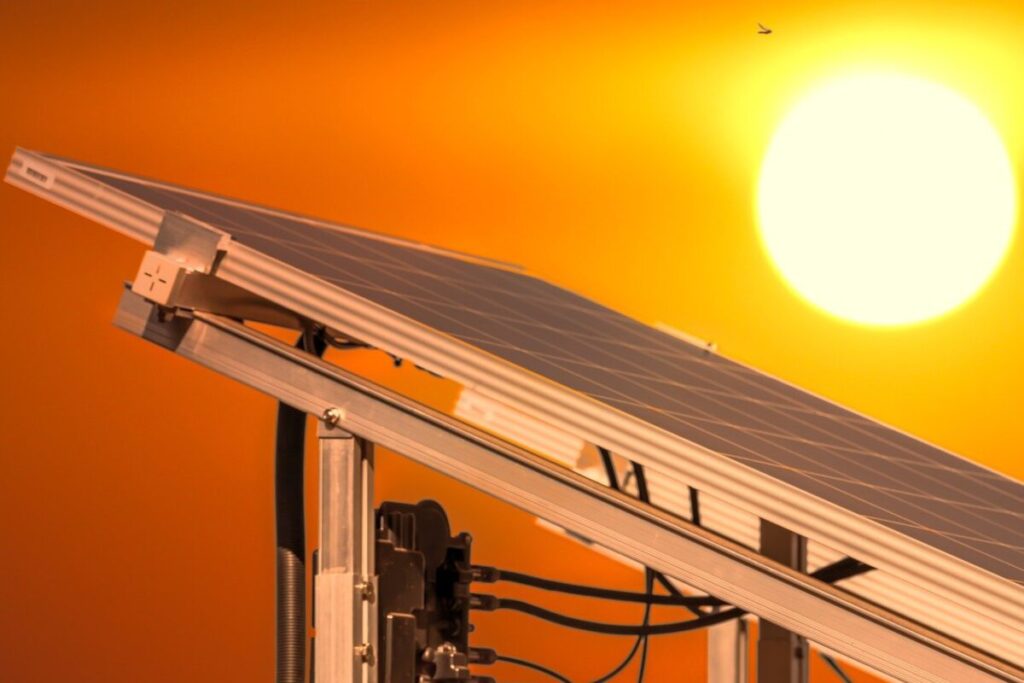Scientists in Mexico have come up with a new cooling technology for solar modules that can reportedly improve PV energy generation by up to 2%. The system uses nanofluids embedded in a single-channel aluminum channel attached to the back of the panel.
Researchers from Mexico University of Sonora (UNISON) and the National Technological Institute of Mexico conducted a numerical study on the thermal performance of a single-channel cooling system for photovoltaic modules.
In their simulation they used different types of nanofluids, such as aluminum oxide (Al₂O₃), copper(II) oxide (CuO) and zinc oxide (ZnO). In addition, they equipped the system with baffles, which are structures placed in a cooling channel to improve heat dissipation.
“The system comprises nine equally spaced baffles, which act as deflectors. The baffles have an angle of inclination of 45 degrees and a height of 1 cm. They promote contact of the coolants with the back of the panel, increasing the effective heat transfer coefficient,” the group explains.
The model included the five layers that make up a photovoltaic panel with an efficiency of 13% – glass, ethylene vinyl acetate (EVA), solar cell, Tedlar and thermal paste, as well as the proposed aluminum channel with a height of 3 cm through which the coolant circulates. “This coolant can be a nanofluid or pure water,” the scientists explained.
The numerical model was constructed using the software Ansys Fluent v20, based on the finite volume method. The PV system model and nanofluid flow under the laminar flow regime were validated against previous literature results, demonstrating a “reliable basis for modeling PV systems and their interaction with nanofluids.”
In all cases, the metal oxides were suspended in water, with changing volumetric concentrations of 0, 0.01, 0.05, and 0.1, respectively. They used a range of Reynolds numbers (Re), the measure used to determine whether fluid flow is smooth or chaotic, ranging from 18 to 42. A fluid inlet temperature of 34 C was assumed.
The scientists found that the nanofluid consisting of CuO was the most effective, improving efficiency by 5.67% compared to pure water in the lowest Re range. “The concentration of 0.1 vol in the nanofluid provides a more effective reduction in the temperature of the photovoltaic cell, which can reach up to 15% when the Reynolds number increases from 18 to 42. The increase of Re from 18 to 42 increases the electrical efficiency by 4%,” they further explained.
In addition, the group also found that increasing the nanofluid concentration from 0 to 0.1 improved electrical efficiency by 1.40% and that increasing radiation from 200 W/m2 to 1,000 W/m2 improved efficiency by 6.5% for pure water and reduced by 5.5%. for the nanofluid. “Baffles improve heat transfer in specific channel areas, resulting in a 2% increase in electrical efficiency due to the diversion and acceleration of fluid flow,” they concluded.
The cooling system was presented in “Numerical study of the thermal performance of a single-channel cooling PV system using baffles and different nanofluids”, published in Heliyon.
This content is copyrighted and may not be reused. If you would like to collaborate with us and reuse some of our content, please contact: editors@pv-magazine.com.

